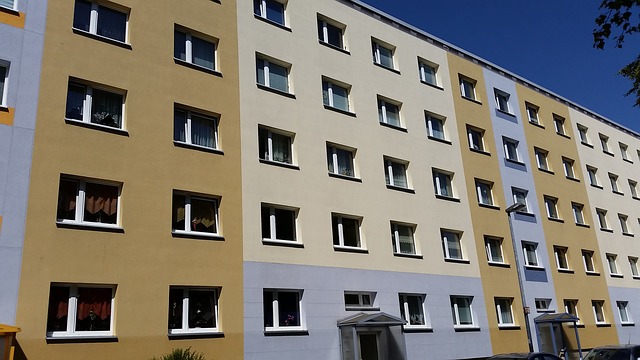
Prefab's Pretty Fabulous
3D Volumetric Construction
Read a summary using the INOMICS AI tool
3D volumetric construction is one of the most modern building construction techniques in civil engineering today. It is a form of off-site construction in which units are manufactured in a factory and then transported to site for assembly. The method of constructing within a factory setting ensures that the necessary building materials are brought in just in time and the modules can be constructed irrespective of the weather outside. The products can be transported to site in various states of finish (modules, basic structural blocks or semi finished) ready for assembly in-situ. The basic idea is that as much of the building is constructed off site (in a factory assembly line) and only brought to site for completion.
The method can be used for building residential, school, office, hospital or other permanent (and sometimes temporary) buildings and go some way to balance the needs between the three components of a traditional construction project – time, quality and cost. In other words, volumetric construction comes into its own when there is a requirement to erect a building quickly, to a high-quality standard and at reduced costs. Clearly there will be pros and cons of this technique and they will be discussed here.
But first, although the terms ‘prefab’, ‘modular’ and ‘volumetric’ are often used interchangeably, it is useful to recognise the subtle differences between them. Prefabricated construction means any structure (or sub structure) designed and produced under factory conditions before being sent to site for inclusion on a building. Modular construction consists of some sort of framework or structure in which smaller units (called modules) are assembled onto the frame on-site. The modules are often prefabricated off site – hence the interchangeability of the terms. As mentioned, modern volumetric modular construction refers to off-site construction methods where buildings are put together by connecting a series of fairly large pre-built sections or modules. What makes this process modular is that the modules that leave the factory are three-dimensional structures - with floor, walls and ceiling and internal connections and finishes.
 The rise, fall and rise of modular buildings
The rise, fall and rise of modular buildings
Although the inception of modular buildings can be dated back to the 18th century, modern volumetric construction really took off (around the world) after the second world war. Demand was rising fast for residential housing and other buildings (temporary or otherwise) and this led to an increasing use of factory made components and prefabricated modules. Whilst initially the prefabricated buildings were a very welcome way of producing a solution to mass housing and schooling needs, they fell out of favour, evoking images of flat-packed homes or cold-war era architecture. Indeed, because a lot of “temporary” buildings became permanent, they were often seen as outdated, aesthetically unpleasing, of low quality and bland.
More recently however, there has been a recognition by engineers and architects that it doesn’t have to be that way. They can be stylish, sustainable, have a longer shelf life and have high quality materials and finish. Driven by the need for increased housing capacity still, the methodology for creating modular buildings has been modernised. So much so, that approximately 15% of total construction around the world is now modular and the trend is only going upwards
Upside to volumetric construction
When compared to traditional building methods, there are some clear benefits to volumetric construction which is driving the upward surge in using this method. They principally revolve around the time, quality and cost triangle; reduced timelines onsite, improved quality of finished product and reduced costs. However, additional benefits like ensuring better sustainable materials can be used in the factory, reducing wastage, and improving productivity onsite further adds to the attractiveness for builders, owners and indeed governments. This has led to a response from engineers and architects to design and build highly sophisticated, environmentally friendly, highly efficient buildings for residential and commercial use.
The speed of build benefit can best be understood when compared to a traditional construction timeline. In the conventional process for example, above ground building work can only begin when the foundation and services on the ground / underground have been completed. In the volumetric method, not only can the modular parts be constructed parallel to the groundwork taking place, they can be done irrespective of the weather outside and also any changes / errors can be handled within the factory quickly. It has been estimated that volumetric building projects can be completed between 30-50% quicker than conventional construction methods.
The quality of the finished product is also improved using the volumetric building technique. Because the modules are built under strict factory conditions, the quality of materials, workmanship and finishing can be better managed and improved. The method also provides employees with a safer and more comfortable working condition which in itself improves productivity and produces a higher quality product.
Perhaps the biggest driver for using volumetric construction is the lower costs associated with it. In fact studies have found modular construction to be 40-60% cheaper than traditional onsite building methods. The overall costs are significantly reduced because there is a more predictable construction programme (which reduces financial risks), the parallel nature of construction mentioned above, reduced time on-site (including all the space required for storing materials and housing on-site staff). Even if some factories are located some way from the final construction site, it is still economically cheaper than to have lots of workers constructing the building on-site. Transportation costs are low compared to accommodation costs of workers on-site. Sometimes, depending on the scale of the building project, the modules can be constructed in purpose-built on-site factories – which themselves are built close to the final destination, reducing the transportation costs further.
The other significant benefit of modern volumetric construction worth mentioning is reduced waste and increased use of sustainable materials. The very nature of modular construction within a factory setting means that “templates” can be used to create efficiencies and materials can be ordered just in time to reduce waste – reducing unnecessary labour costs as another benefit. At the same time, the process enables modules to be created using modern sustainable construction products under strict quality conditions – not only improving the efficiency of the building, but increasing its attractiveness too.
Downside to volumetric construction
Whilst there are undoubtedly benefits to volumetric construction, there are also limitations which are holding back the large-scale uptake of it. One of the major limiting factors (ironically) is the amount of changes that can be made during the construction process. Because of the nature of using templates and assembly lines, once a design has been signed off and the factory work has begun any major changes would have a significant impact on timelines and costs. Additionally, the process of installing the modules (on-site) must be thought through well in advance. Therefore engineers, architects and contractors have to front-load all major design and installation decisions and attempt to have a design freeze once the project gets into the factory.
A second challenge is another consequence of the construction process, namely the limiting ability to have more creative variety in design. Module sizes and shapes do themselves restrict the flexibility in design simply because of the repetitive nature of the modules. This, in turn, limits the type of buildings that can be constructed in this way. Where buildings can use repetitive modules (like schools, hospitals and residential homes) they can benefit from volumetric build, but where architectural flair and non-repetitive modules are required, the time and cost advantages can be reduced significantly.
A third limiting factor is the increased planning and logistics required for volumetric construction. Since the factory-built modules need to be transported to site ready for connection, it is important that contractors, engineers and logisticians have a comprehensive plan for transportation, delivery and installation. Due to the sheer size of some modules, several things can go wrong on route from factory to site including the loading of the modules onto lorries, navigating the route via low-bridges and tight corners and removing them from the transport without damage or mishaps. Any changes or alterations can have a negative impact in terms of budgets and project lead times so they have to be engineered out as much as possible.
-
- Researcher / Analyst Job
- Posted 2 weeks ago
FPGA Developer and Verification Engineer (SY-EPC-CCE-2025-278-GRAE)
At CERN in Genève, Switzerland -
- Conference
- (Hybrid)
- Posted 2 weeks ago
6th International Conference on Mechanical Engineering (ICMECE 2026)
Between 8 Jul and 9 Jul in London, United Kingdom











